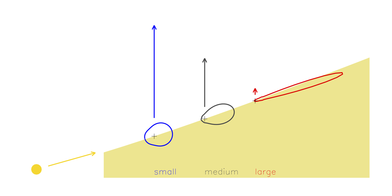Why are protoplanetary disks so faint in scattered light?
(sub)micron-sized dust grains are thought to populate the upper layers of protoplanetary disks. Such small grains should be efficient scatterers in the optical and near-infrared, yet these disks are observed to be very faint at those wavelengths.
(sub)micron-sized dust grains are thought to populate the upper layers of protoplanetary disks. Such small grains should be efficient scatterers in the optical and near-infrared, yet these disks are observed to be very faint at those wavelengths.

In this paper, we propose this observed faintness of disks can be explained by the presence of larger, but fluffy dust aggregates rather than small compact particles. The large size causes extreme forward scattering, resulting in a relatively faint disk with a grey to red color, while the phase function appears relatively isotropic at intermediate angles, mimicking the appearance of smaller grains.
We demonstrate that extreme forward scattering can explain the brightness and color of HD 100546, by comparing detailed radiative transfer models with anisotropic scattering to new and archival scattered light images from the Hubble space telescope.
link: Mulders et al. 2013 (arXiv)
link: Mulders et al. 2013 (arXiv)

 RSS Feed
RSS Feed
